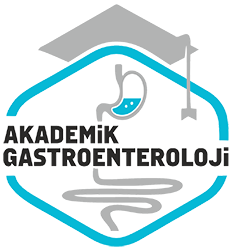Erken evre hemoroid tedavisinde infrared koagulasyon ve lastik bant ligasyon*
Infrared coagulation and rubber band ligation in the treatment of early stage hemorrhoids
Özet
Giriş ve amaç: Semptomatik hemoroidlerin tedavisi için cerrahi dışı farkli yöntemler olmasina ragmen bunlarin hangisinin daha üstün olduğu tartismalidir. Bu çalışmada erken evre hemoroidlerin tedavisinde lastik bant ligasyon (LBL) ve infrared koagulasyon (IRK)’un etkinliginin ve komplikasyonlarinin arastirilmasi amaçlandi. Gereç ve yöntem: Randomize prospektif bu çalışmada fleksible sigmoidoskopi ve anoskopik inceleme ile 2. derece internal hemoroid tanısı konulan, daha önce tedavi edilmemis 51’i kadın, 40’i erkek, median yaşi 42 (21–64) yıl olan 91 hastaya semptomlar kaybolana kadar 4 hafta ara ile bir veya daha fazla seansta LBL (n=45) veya IRK (n=46) uygulandi. Her seanstan bir hafta sonra ve son seanstan 2, 12 ve 24 ay sonra tedavilerin etkinligi ve komplikasyonlari değerlendirildi. Agri değerlendirmesi 0 ile 10 arasında skorlanan vizüel analog skala (VAS) ile yapildi. Bulgular: LBL ve IRK gruplarinda ortalama tedavi seans sayisi benzerdi (1.73±0.45 ve 1.78±0.42, p>0.05). Postoperatif birinci hafta sonunda spontan agri için ortalama VAS skorlari LBL ve IRK gruplarinda sırası ile 3.8±2.1 ve 2.4±2.0 idi (p<0.05). LBL grubunda VAS skoru >5 olan hasta sayisi 5 iken, IRK grubunda 0 idi (p<0.05). Birinci hafta sonunda rektal tenezm sikligi LBL grubunda %26.6, IRK grubunda %6.5 bulundu (p<0.01). Sekizinci hafta sonunda iki grupta da hiçbir hastanın rektal agri ve/veya tenezm yakinmasi yoktu. LBL ve IRK’nin rektal kanamayi önlemedeki basarisi sırası ile 2. ayda %97.8 ve %89.1 (p>0.05), 12. ayda %88.9 ve %82.6 (p>0.05), ve 24. ayda %86.7 ve %54.3 (p<0.01) idi. Sonuç: LBL ikinci derece hemoroidlerin kanama kontrolünde IRK’dan daha etkilidir. Ancak postoperatif erken komplikasyonlar LBL’de daha siktir. Postopreratif 2. yıl nüks IRK’da daha sik olmasina ragmen komplikasyonlarin azligi nedeni ile erken evre hemoroidlerin tedavisinde IRK ilk başamak tedavi seçenegi olabilir.
Abstract
Background/aim: Although there are different non-surgical methods for the treatment of symptomatic hemorrhoids, which method is superior remains controversial. The aim of this study was to investigate the effectiveness and complications of rubber band ligation (RBL) and infrared coagulation (IRC) in the treatment of early stage hemorrhoids. Materials and methods: In this randomized prospective study, previously untreated 91 patients (51 female, 40 male; median age 42 (21-64) yrs) with second degree internal hemorrhoids diagnosed by flexible sigmoidoscopy and anoscopic examination underwent either RBL (n=45) or IRC (n=46) in two sessions with a four-week interval. Effectiveness, adverse effects and complications of each treatment method were evaluated at the end of the first week after each treatment session and at the 2nd, 12th and 24th months after the last session. Pain was evaluated with visual analogue scale (VAS) scored between 0-10. Results: The average treatment sessions were similar in both groups (RBL 1.73±0.45, IRC 1.78±0.42, p>0.05). The mean VAS scores for spontaneous pain at the end of the first week in the RBL and IRC groups were 3.8±2.1 and 2.4±2.0, respectively (p<0.05). The number of patients with VAS score of more than 5 in the two groups were 5 and 0 (p<0.05). While the occurrence of rectal tenesmus after one week of treatment was 26.6% in the RBL group, this ratio was 6.5% in the IRC group (p<0.01). No patient in either group had rectal pain and/or tenesmus at the end of the eighth week. The success of RBL and IRC in prevention of rectal bleeding was 97.8% and 89.1% (p>0.05) at the 2nd month, 88.9% and 82.6% (p>0.05) at the 12th month, and 86.7% and 54.3% (p<0.01) at the 24th month. Conclusion: RBL is more effective than IRC in the prevention of bleeding in second degree hemorrhoids. However, postoperative early complications are more frequent with RBL than with IRC. Although postoperative second year recurrence rate is more frequent in patients treated with IRC, it may be the first choice in the treatment of early stage hemorrhoids due to the rarity of complications.



